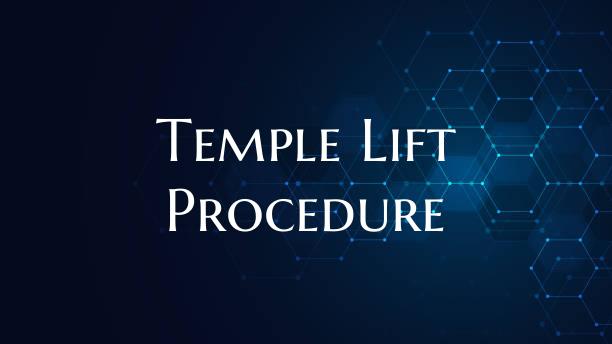
Temple Lift Procedure
Introduction: When it comes to facial rejuvenation, the temple area is often overlooked despite its significant impact on overall aesthetics. The temple lift procedure is a cosmetic surgery technique that targets this area specifically, helping to restore volume, smooth out wrinkles, and enhance facial harmony. In this article, we will delve into what the temple lift procedure entails, its benefits, potential risks, and recovery process.
What is a Temple Lift Procedure? The temple lift procedure, also known as temporal rejuvenation or a temporal brow lift, is a surgical technique designed to address sagging skin, volume loss, and wrinkles in the temple area. As we age, the temples can lose volume and become hollow, giving the face a sunken or tired appearance. The temple lift aims to restore youthful contours to the temples, creating a more lifted and rejuvenated appearance.
Procedure Details: During a temple lift procedure, incisions are typically made within the hairline to minimize visible scarring. The surgeon will then carefully lift and reposition the tissues in the temple area, addressing any excess skin and restoring lost volume. In some cases, fat grafting or dermal fillers may be used to further enhance the results by adding volume to the temples.
Benefits of a Temple Lift: - Restores lost volume to the temples - Improves facial symmetry and balance - Smoothes out wrinkles and creases in the temple area - Enhances overall facial contours and proportions - Results in a more youthful and refreshed appearance
Risks and Considerations: Like any surgical procedure, the temple lift carries certain risks, including infection, scarring, asymmetry, and adverse reactions to anesthesia. It is important to choose a qualified and experienced surgeon who can minimize these risks and achieve optimal results. Patients should also have realistic expectations about the outcomes of the procedure and be prepared for a period of recovery and swelling following surgery.
Recovery Process: After a temple lift procedure, patients can expect some swelling, bruising, and discomfort in the treated area. Pain medication and cold compresses can help alleviate these symptoms during the initial stages of recovery. Most patients are able to resume normal activities within a week or two, although strenuous exercise and sun exposure should be avoided for several weeks following surgery.
Conclusion: The temple lift procedure offers a targeted solution for addressing volume loss, wrinkles, and sagging skin in the temple area, helping to achieve a more youthful and harmonious facial appearance. By understanding the details of the procedure, its benefits, risks, and recovery process, individuals can make informed decisions about whether a temple lift is the right option for their cosmetic goals. Consulting with a skilled plastic surgeon is key to achieving safe and satisfying results from a temple lift procedure.